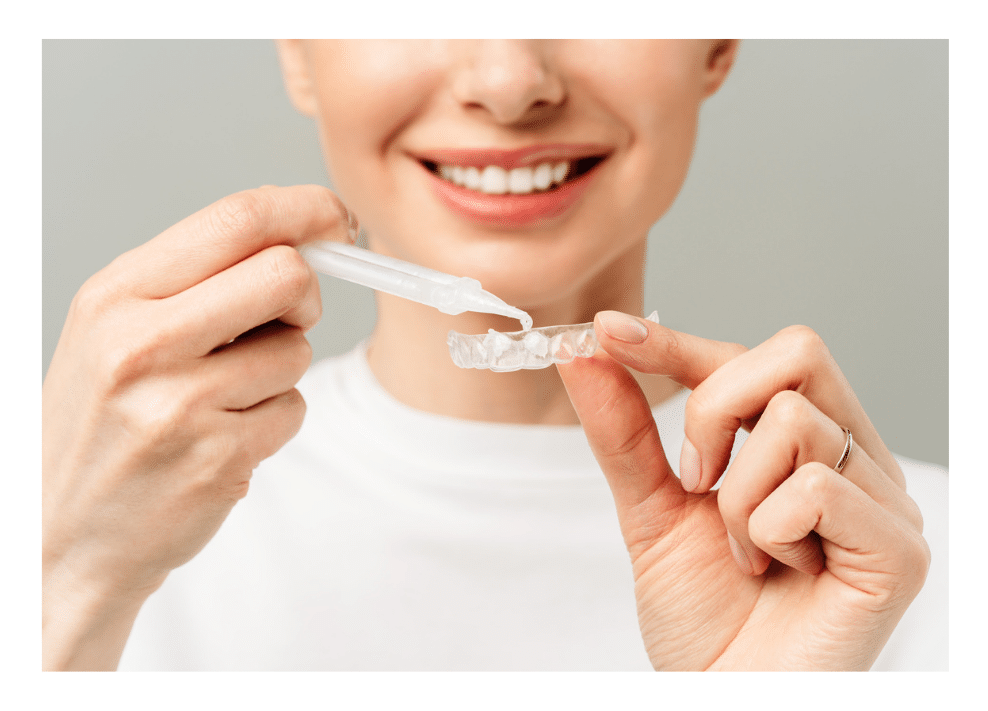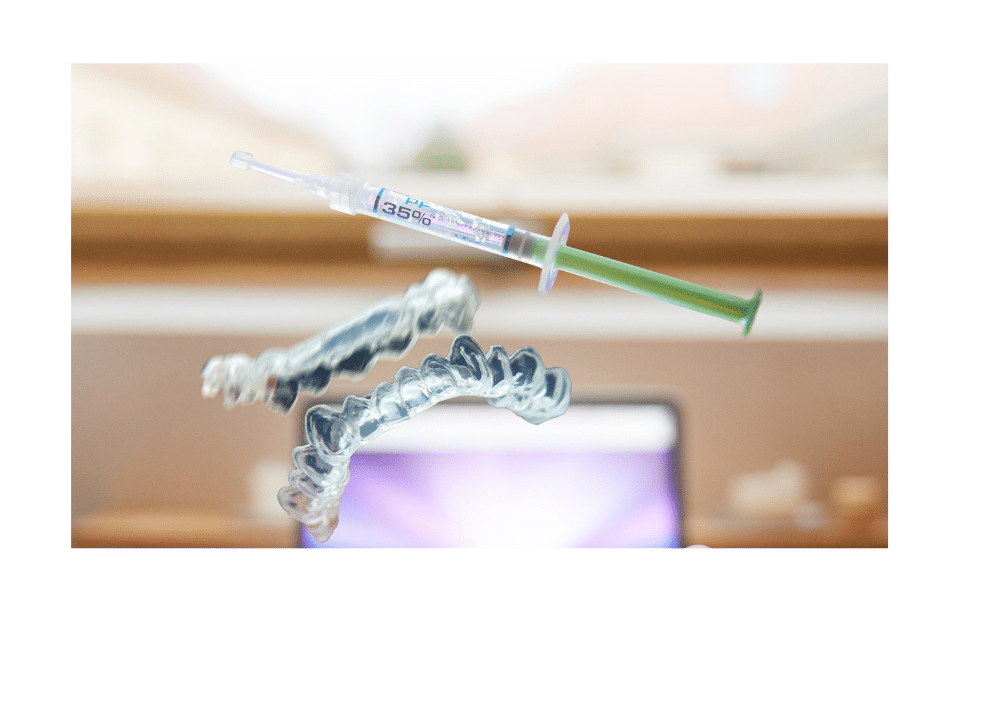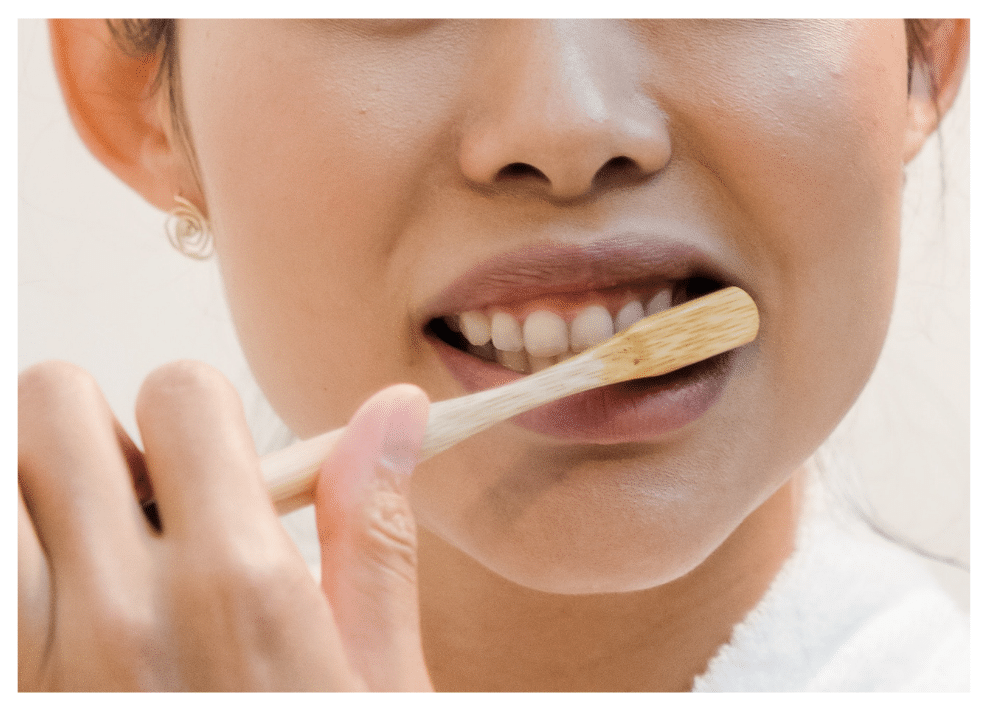What is tooth whitening?
Tooth whitening is the process many people use to brighten their smile. While teeth naturally darken with age, staining can also be caused by foods and beverages like coffee, tea, wine, and berries. Some medications, smoking, or tooth damage can also cause discolouration.
It’s important to talk to your dentist before doing any whitening procedure at home. Your teeth need to be healthy and strong enough to handle the treatment. Your dentist will consider your unique oral health conditions and can tell you which method, if any, is suitable for whitening your teeth.
In most cases, the natural colour of teeth is within a range of light greyish-yellow shades. Teeth naturally darken with age and their appearance can be affected by the accumulation of surface stains acquired from the use of tobacco products and the consumption of certain foods or drinks.
In addition, the perception of the colour of teeth is severely affected by skin tone and make-up. Independent of the real colour of their teeth, people with darker skin or who use dark makeup will look like they have brighter teeth.
It should be noted that product claims related to tooth whitening are seen as cosmetic in nature by Health Canada. These claims must be accurate, so as not to mislead the public. However, the regulator tolerates some puffery or exaggeration. As a consequence, the results of whitening treatment may not be as convincing as consumers originally expected.

What are the advantages of tooth whitening?
- Non-invasive
- Relatively inexpensive
- Accessible
What are the disadvantages of tooth whitening?
- Tooth sensitivity and irritation to soft tissues can occur during bleaching treatment, but these effects usually are transient.
- Tooth whitening is not permanent. In order to maintain the results achieved by the initial whitening, you will have to continue to use a tooth whitening system. If you consume coffee, tea, red wine, berries, etc. or if you smoke, your teeth will become stained all over again. Furthermore, the effects of long-term tooth-bleaching are unknown.

Types
There are many tooth whitening options available:
- whitening toothpaste, gels or strips you can buy at the store;
- at-home whitening under a dentist’s care; and
- in-office whitening.
Although teeth are not naturally meant to be completely white, many people want a brighter smile. Responding to this desire, a wide range of “whitening” options has become available to consumers. These products fall into two main categories: surface whiteners and bleaches.
Surface whiteners
These products use special abrasives to improve the product’s ability to remove surface stains. Most products in this category are either toothpastes or chewing gums. Because the special abrasives in these whitening products are often only finer versions of what is used in regular toothpastes, they are unlikely to cause excessive tooth wear. However, the effectiveness of these products is limited to surface stains and should not be used as a substitute for professional cleaning.

Bleaches
Most bleaching products are peroxide-based and are actually capable of altering the colours of the tooth itself. However, not all tooth discolourations respond to tooth-bleaching treatments. Individuals contemplating tooth-bleaching should consult with a dentist to determine the cause of the tooth discolouration and to determine whether a bleaching treatment will have the desired result. This step is especially important for patients with fillings, root canal treatments, crowns and/or with extremely dark stains on the anterior teeth.
A number of different bleaching techniques and products are available to patients. Your dentist will use one of these two methods to whiten your teeth:
- Vital bleaching is done on “living” teeth and can be used to whiten your teeth if they have become stained by food or tobacco, or if they have become dark with age.
- Non-vital bleaching is bleaching done on teeth that are no longer “alive.” If your tooth has changed colour because of a root canal, non-vital bleaching can lighten your tooth from the inside out.

Procedure
There are three methods for bleaching teeth. The method that will work best for you depends on the number of teeth that need to be bleached, and on how badly they are stained (or discoloured).
Your dentist may suggest:
- Putting a special bleach on your stained teeth and using heat (or heat and light) to start the bleaching action; or
- Wearing a custom-made mouthguard filled with a special bleach for part of each day; or
- Brushing with a special bleach mixed in toothpaste.
Bleaching should be done only under a dentist’s care. Tooth-bleaching under controlled dental office conditions may be safe and effective, but the new in-office vital tooth-bleaching techniques, particularly those using laser and lights, have undergone little scientific assessment.
Home care
Good, consistent home care is important to maintain the bright appearance of your teeth. Brushing twice a day and flossing are an integral part of everyone’s home regimen.
Regular professional check-ups and cleanings will help prevent dental problems and will maintain the health and appearance of your teeth.
In order to extend the effects of tooth whitening, you should avoid foods and substances that stain your teeth. If you continue to eat stain-causing foods or continue to smoke, your teeth will not remain white.
Even with a careful diet and change of habits, the effects of whitening will diminish over time and you will have to continue using whiteners or receiving treatment in order to maintain a brighter smile.

